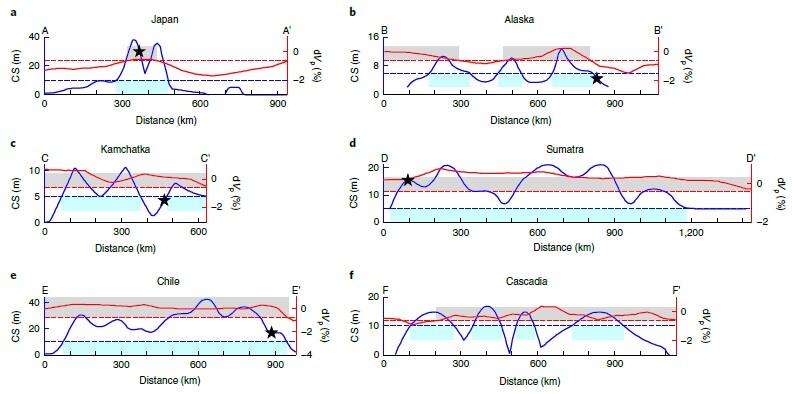The research group of Dr. Dapeng Zhao (Professor, Tohoku University Graduate School of Science Research Center for Prediction of Earthquakes and Volcanic Eruptions) and Dr. Jianke Fan (currently Associate Professor at the Chinese Academy of Sciences Qingdao Ocean Research Institute) used seismic tomography to investigate the detailed three-dimensional seismic velocity structure beneath the six subduction zones in the world, including the Japanese archipelago, where large earthquakes of M9.0 or above have occurred, and revealed that there is a significant low-velocity anomaly in the mantle under the subducting ocean plate. From the 1880s, when the seismograph that could accurately determine the magnitude (M) of an earthquake was invented, until today, there have been five large earthquakes of M9.0 or above in the world (there is a research that indicates that one also occurred on the west coast of North America in 1700 ). However, thus far, research on the mechanism of megathrust earthquakes has mainly focused on shallow structures of up to a depth of 50 kilometers near the plate boundary.

(Credit: J. Fan and D. Zhao, Subslab heterogeneity and giant megathrust earthquakes. Nature Geoscience, 14, 349-353, 2021).
According to Professor Zhao, "I was wondering what the deep structure of the subduction zone looks like, and investigated the detailed 3D P-wave velocity structure of the six subduction zones in the world where a large earthquake occurred up to a depth of 600 kilometers". It was discovered that there is a significant slow (low-velocity) anomaly (SLVA) in the mantle under the subducted oceanic plate (also called a slab). This is thought to reflect a hot mantle upwelling. In addition, a remarkable relationship was found between the position of the anomaly and epicenter position and destruction range of the megathrust earthquake; therefore, it can be inferred that the presence of the anomaly affected the occurrence and range of the megathrust earthquake.
These were important clues for elucidating the mechanism of occurrence of a large earthquake and predicting its epicenter position and rupture range. Professor Zhao said, "As a future development, we will also collect data on temporary seismic observations in each region and investigate the 3D S wave velocity structure, Poisson's ratio distribution, and 3D P wave anisotropic structure. We would like to estimate the detailed spread, temperature difference, fluid content, and buoyancy of the low-velocity anomaly under the plate. We also want to investigate the relationship between the occurrence of large M7 and M8 class earthquakes and the anomalous structure under the plate as well as the large earthquakes of M9.0 or above".
■ Low-velocity anomaly: The part where the seismic wave velocity is smaller than the surrounding area. Due to factors such as high temperature and fluid, it becomes lighter than the surroundings and can rise owing to buoyancy. Magma chambers under active volcanoes are a prominent example.
This article has been translated by JST with permission from The Science News Ltd.(https://sci-news.co.jp/). Unauthorized reproduction of the article and photographs is prohibited.




